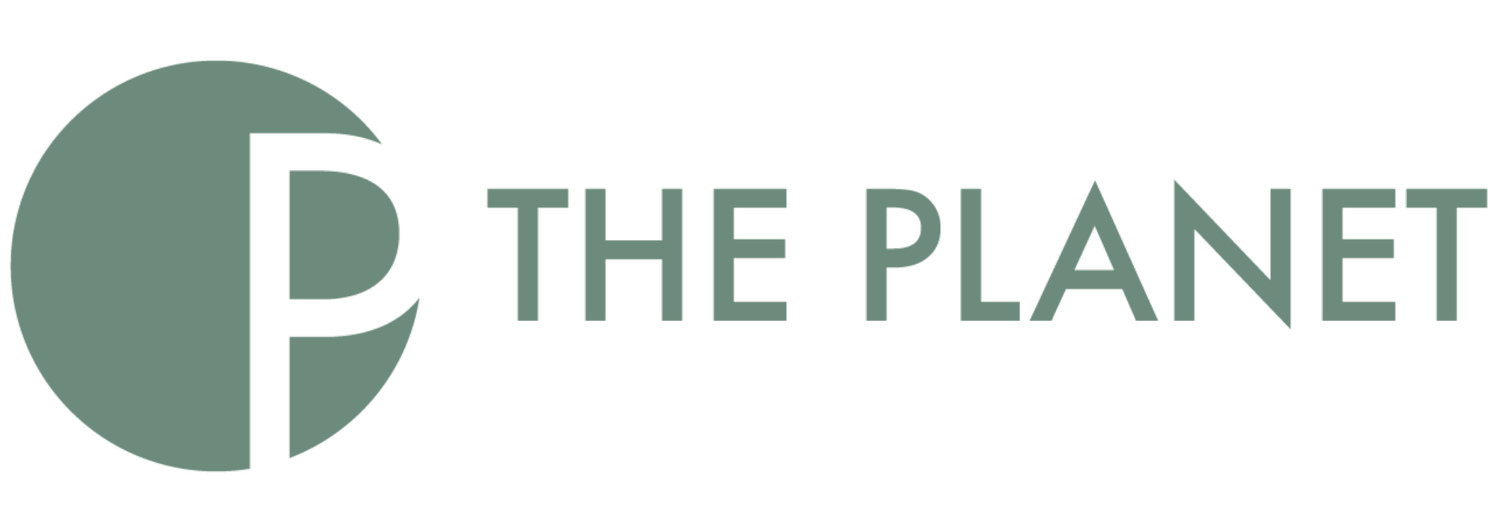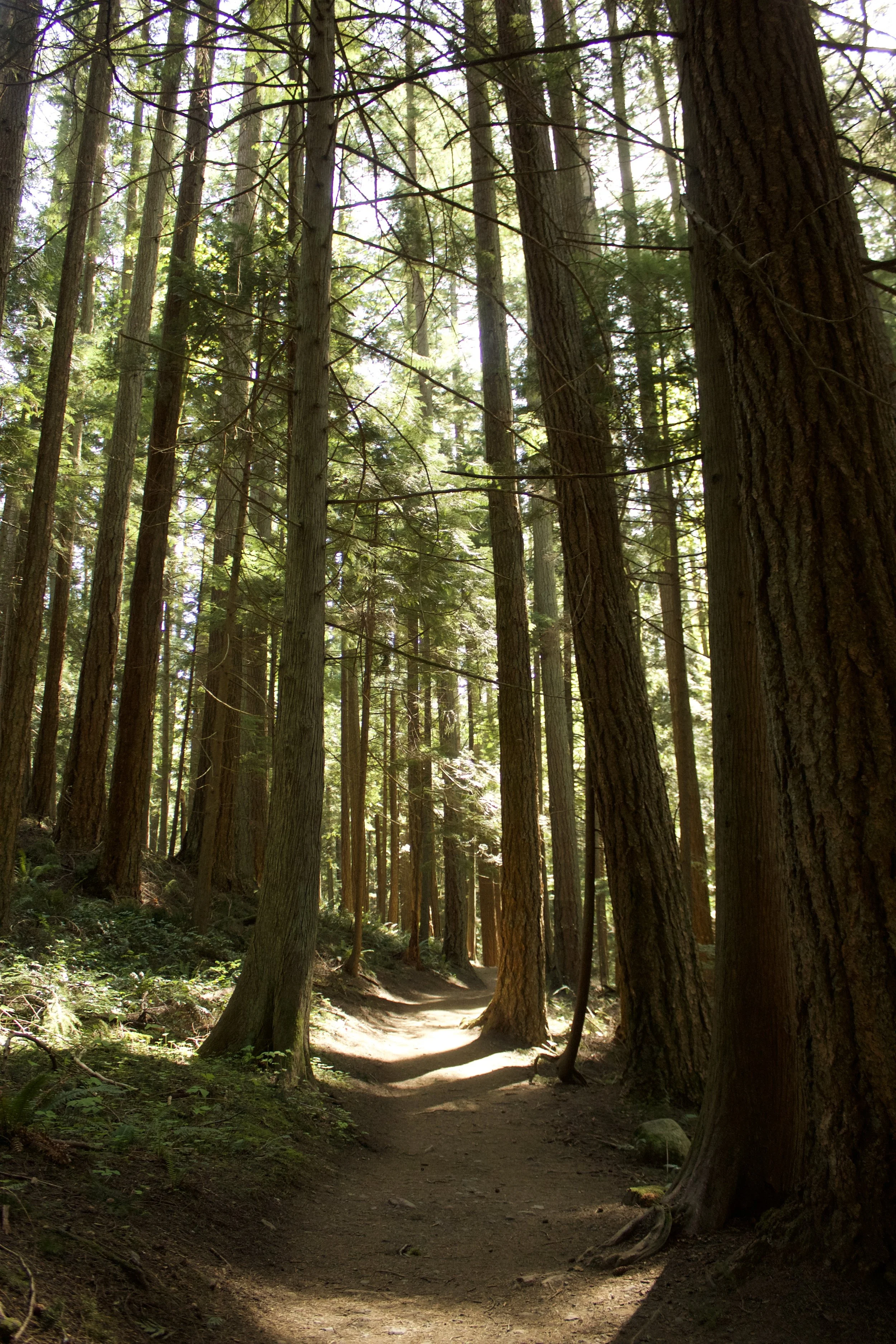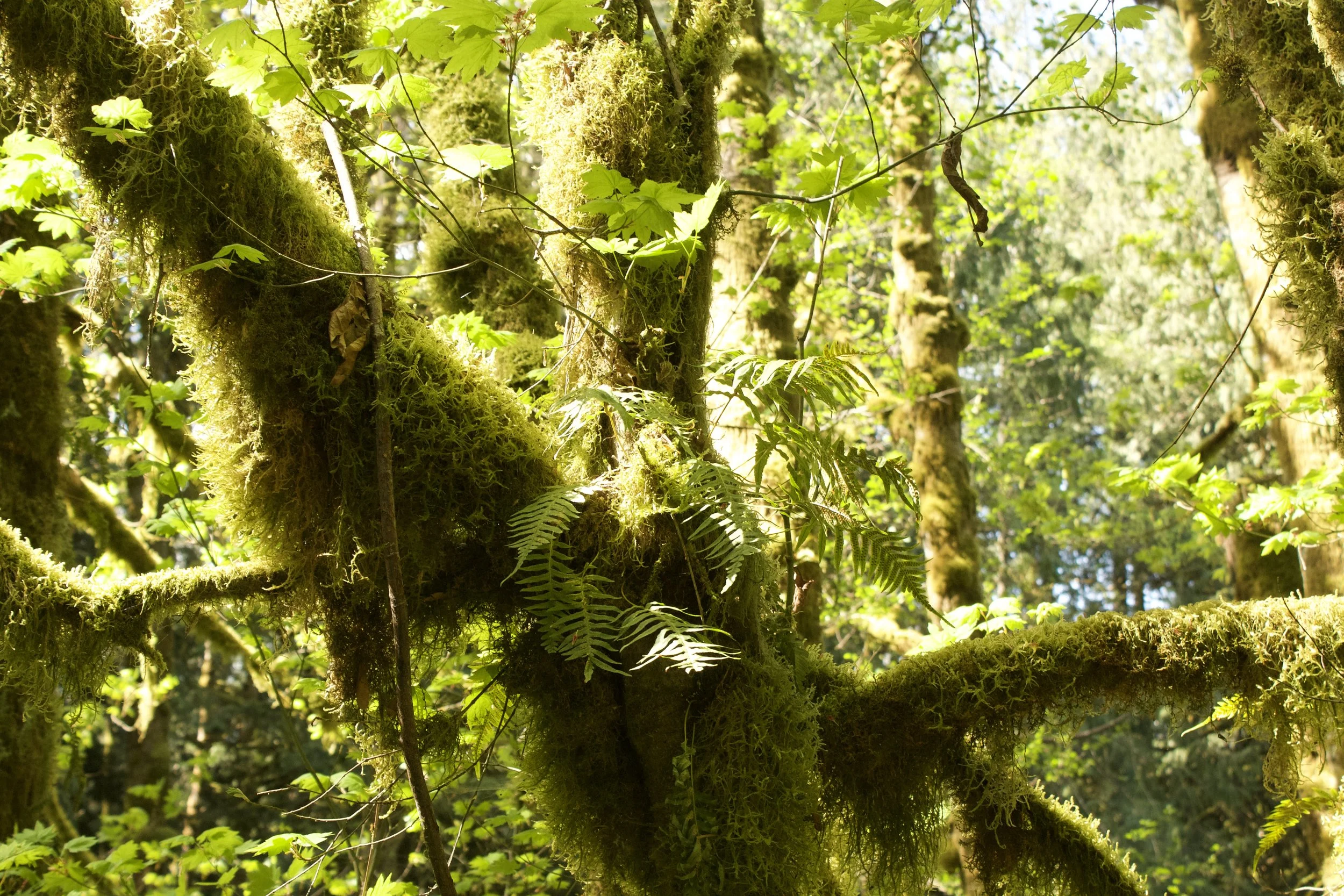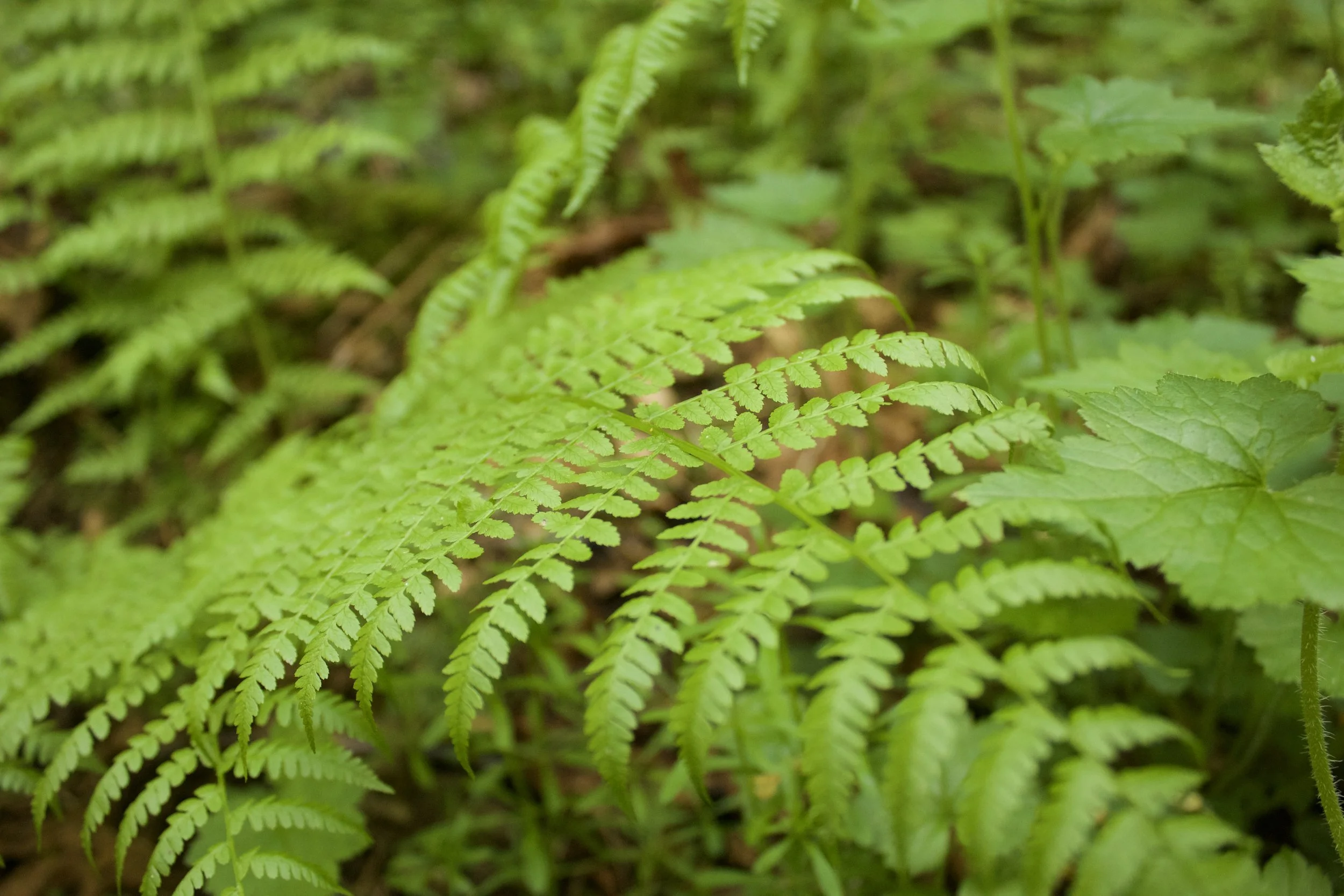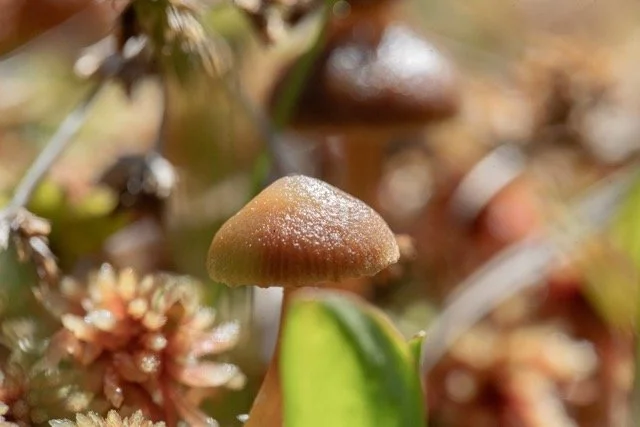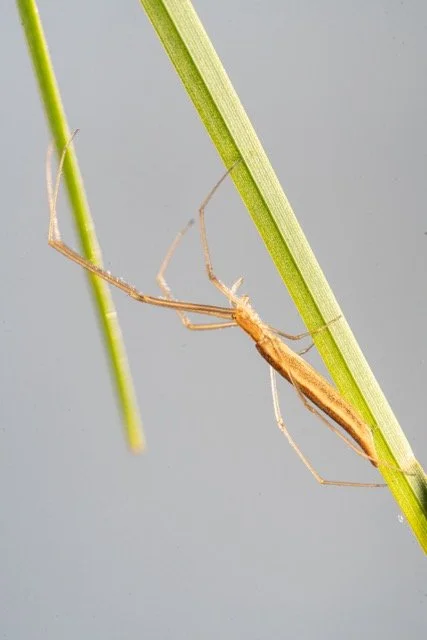Protections In Different Directions
Two nature reserves reflect on their preservation efforts and thriving ecosystems
The wetlands created by a beaver pond display a stunning first impression as hikers enter the Stimpson Family Nature Reserve. // Photo by Bailey Nicholson
Photo Essay by Bailey Nicholson & Gareth Miller
July 10, 2025
Nestled in rainy Northwest Washington are two conservation areas, each focused on its own aspect of protecting the environment. One, open to the public, promotes the protection of natural spaces through community engagement. The other, which is not typically visited by the public, protects pristine wetland habitat, serving its purpose quietly in the background.
Lined with trees, 4.9 miles of trail allow the public to access Stimpson Family Nature Reserve and walk through old growth forest. // Photo by Bailey Nicholson
These nature reserves have been protected for many years. The Stimpson Family Nature Reserve, celebrating 25 years, and the Sumner Lake Bog, which just turned 15, have been pillars of the Whatcom and Skagit County ecosystems ever since. After protection was established, the ecological landscapes of these reserves have been allowed to thrive.
With 369 acres of land and nearly five miles of public trails, Stimpson Family Nature Reserve provides a peaceful connection to nature just minutes away from downtown Bellingham. Managed by Whatcom Land Trust, this nature reserve gives Bellingham residents a place to enjoy old-growth forests on protected land.
“The location is nice, how it’s not super in the city, you can’t hear any cars, and it feels very secluded even though it’s not,” lifelong Bellingham resident Sadey Goodman said.
Whatcom Land Trust takes pride in the fact that they can connect the community with the environment at Stimpson.
“One of the big benefits of having people have access to [Stimpson] is that they can see what a beautiful, rich, diverse forest habitat looked like in Whatcom County,” Alex Jeffers, the conservation director with Whatcom Land Trust said.
While Whatcom Land Trust oversees the property of Stimpson Nature Reserve, the entire property isn’t owned by them. The majority of the land came from a donation to Whatcom Land Trust from the Stimpson family. But there are pieces of the property additionally owned by the Department of Natural Resources, the City of Bellingham, Whatcom County and Western Washington University. These landowners have all worked together to make Stimpson the conservation area that it is today.
It’s easy to appreciate the state that the landscape is in now, full of lush trees, plants, and old growth. However, the Stimpson Family Nature Reserve was historically owned by the forest company Trillium, who left behind remnants of old logging roads. In the reserve, you can see the ecological succession and progression of how the landscape has changed since logging. The majority of the old-growth trees stand on the backside of the loop trail.
Moss and ferns cover the trees to create an ecosystem full of green life. // Photo by Bailey Nicholson
Ferns cover the ground throughout Stimpson. Picture-esque of the Pacific Northwest, several species of fern are native at the Stimpson Nature Reserve. // Photo by Bailey Nicholson
This old-growth represents the climax community of the ecosystem, whereas the younger forest that faced logging disturbances are still in successional stages.
Protected since 2000, Stimpson Family Nature Reserve has provided the community with a place to enjoy the diverse habitat of western Washington.
Sumner Lake Bog
A small mushroom nestled into the moss at Sumner Lake Bog. // Photo by Gareth Miller
The Sumner Lake bog is a small conservation area on the north end of Sumner Lake, in central Skagit County. Comprised of 20 acres of Skagit Land Trust land and a 7-acre conservation easement, Sumner Lake Conservation Area protects a pristine ecosystem of floating marsh and wetland. Managed by the Skagit Land Trust, this property represents some of the last remaining freshwater marsh in Washington State and provides pristine habitat for native threatened plants, insects, and amphibians.
The Skagit Land Trust took ownership of its portion of Sumner Lake in 2010, following a donation from the Skagit Valley Herald as part of a required mitigation effort. Since then, the Skagit Land Trust has managed Sumner Lake as a limited public access area, meaning that there are no permanent trails, access points or parking lots. This management style ensures that the protection of this ecosystem comes first.
Professor Abe Lloyd of Western Washington University's Fairhaven College teaches a wetland plant identification class and uses the Sumner Lake bog as a location for field identification.
“I picked Sumner Lake bog because it's one of the best examples of a peat bog that I know of in reasonable proximity to Bellingham,” Lloyd said.
Peat bogs and peatlands comprise only 3% of the world's surface, making Sumner Lake a particularly unique ecosystem internationally.
A stretch spider variety pictured perched on a blade of grass. // Photo by Gareth Miller
“[It’s a particularly] sexy bog, if you will, because it has a lot more carnivorous [plant] species than you normally find in bogs,” Lloyd said.
Historically, Sumner Lake was used as a log storage facility for nearby logging operations, on the Department of Natural Resources land to the south of the lake. The remnants of these activities created the current floating marsh, which makes its way back and forth along the lake, driven by the wind.
Later, Sumner Lake was used as a dump site for sawdust from a nearby saw mill before being abandoned and left to return to its natural state.
Floating marshes of this type are incredibly fragile and can be easily damaged by human disturbance, such as walking. Fortunately, much of the beauty of the Sumner Lake Conservation area can be viewed from the road, and the Skagit Land Trust encourages people to visit the marsh while being wary of their impact on the ecosystem and the animals that call it their home.
Nature reserves in Washington are important for protecting and restoring our lands. A nature reserve open to the public, such as Stimpson Family Nature Reserve, connects the community to the environment. On the other hand, a conservation area such as Sumner Lake Bog with limited public access protects the ecosystem and natural environment. Either way, they both work to protect ecosystems and inform the public of their importance.
